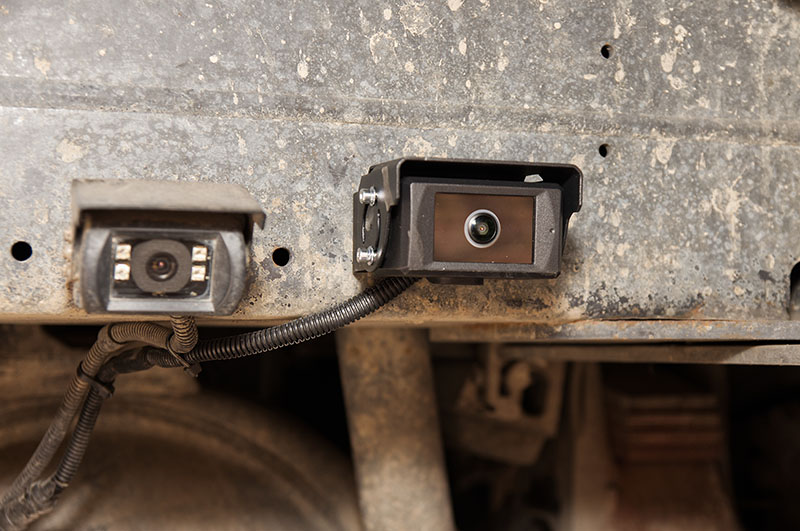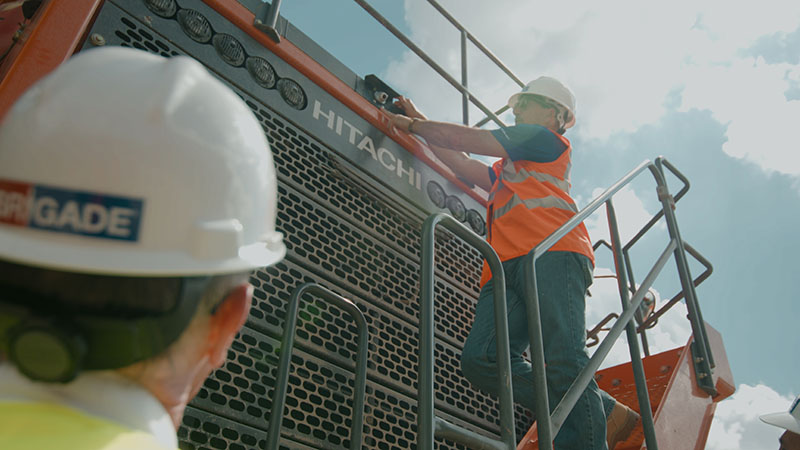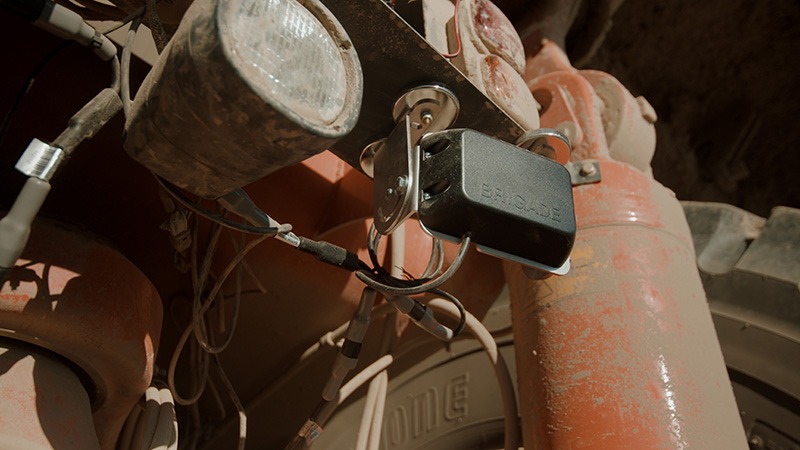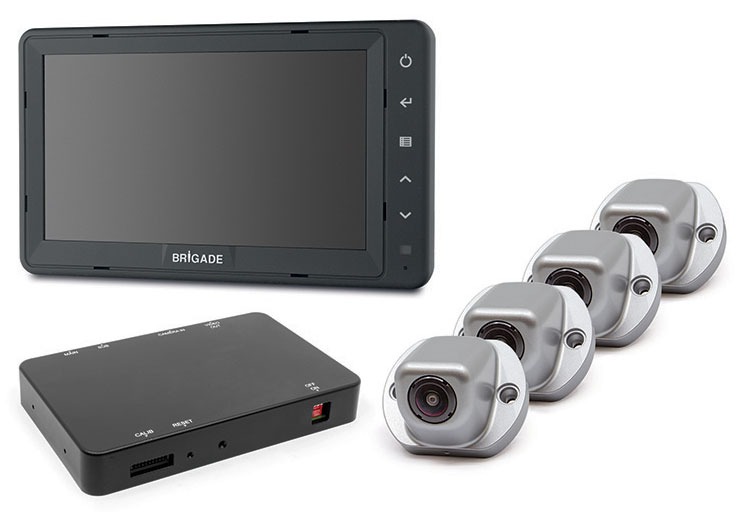
According to the Association of Workers’ Compensation Boards of Canada, there were 212 construction-related workplace fatalities in 2021. In fact, construction accounts for more accidental deaths than any other industry.
It’s a trend that Ontario-based Brigade Electronics wants to stop. The company, founded in the U.K. in 1976, is recognized as a worldwide leader in vehicle safety systems. It specializes in passive and active solutions to enhance safe vehicle operations at construction sites, airports, bus terminals and public roads.
“Brigade is all about saving lives,” said Warren DiMarco, CEO of Brigade Electronics (Canada) Ltd. “The whole premise of the company is: how do we save more lives? Our products centre on commercial vehicles and how we can help them avoid hitting pedestrians, cyclists and workers. Our customers are found in any industrial field – anybody with large equipment that has blind spots.”
Brigade Electronics’ safety products are aftermarket solutions that can be added to any existing vehicle. Options range from 360-degree camera monitoring systems to radar, ultrasonic obstacle detection and audible backup warning alarms. Other products offered by Brigade Electronics include dashcams, mobile digital recorders (MDRs) that record all activity around an operating vehicle and artificial intelligence (AI)-powered devices that provide instant audible and visual alerts to the driver as soon as a human is detected near the vehicle.

All this equipment enhances safety on the job by addressing blind spots that come standard with large commercial and industrial vehicles. In addition to its regular cameras and audible backup alarms, Brigade Electronics’ Backsense radar obstacle detection system can flag pedestrians or obstructions from one metre up to 30 metres from the vehicle. The Backeye®360 camera covers the entire area around the vehicle with four camera feeds, an onboard monitor and an MDR that records footage and sends it via WiFi to secure cloud storage. Ultrasonic obstacle detectors can minimize collisions and vehicle damage by alerting the driver of moving and stationary objects near the vehicle – ideal for slow-moving, on-road equipment such as waste removal vehicles.
DiMarco says recorded footage can be invaluable during accident and insurance investigations to determine how events unfolded and inform future preventative policies, especially when many companies face unnecessary losses from false claims and “crash for cash” incidents. In these cases, reliable footage can distinguish between simply accepting liability and proving innocence.
“Everything we do is about reducing risk and creating visibility.”
Warren DiMarco, Brigade Electronics (Canada) Ltd.
“We get fantastic feedback from our customers. For them, avoiding any litigation from accident or property damage is huge, especially for a smaller company. Larger customers, like the City of Toronto, have our equipment on many vehicles. Recordings from our Backeye®360 cameras help reduce false litigation,” he said.
DiMarco says Brigade Electronics advocates using passive and active systems for maximum safety.
“A passive system does not provide a notification to the driver and relies on the vehicle operator to monitor the system. A good example is a standard car mirror that doesn’t notify the driver of a problem until he looks into it. The driver’s reaction time, in this case, is often delayed.
“An active system notifies the driver without relying on the vehicle operator to monitor the system. [It] immediately provides a warning sound or audible alert once a pedestrian, vehicle or other object is detected in the vehicle’s blind spot. The active alert allows the driver to react quicker to avoid a collision.”
Rooted in safety
In the early 1970s, Brigade Electronics founder Chris Hanson-Abbott was in Japan, where he noticed that large vehicles were equipped with beeping backup alarms. He brought them to the U.K., adding additional products as time and technology permitted. DiMarco says Brigade Electronics is known for its safety innovations.

“I think something that makes us stand out is that all of our products work together,” he said. “We are always finding new ways to alleviate risk. Everything we do is about reducing risk and creating visibility. If you think of our radar, backup alarms, 360-degree cameras [and] MDRs – they all provide some type of increased awareness and allow the vehicle operator to react quicker than they normally would. Our newest products are AI cameras and our Fusion line, which is a very integrated product that brings all our devices together on one monitor.”
Brigade Electronics approaches potential customers directly to promote its safety-enhancing devices. When the client is ready to buy, the company refers them to one of its qualified distributors, who sell and install the devices on customer vehicles.
“So, the end-user has direct access to the manufacturer, which is Brigade, but also the support of the distributor,” DiMarco said. “After the installation, we’ll go in and review the installation and do an audit to make sure it was done correctly. It’s important from our perspective that the product be installed properly. For example, they may need help with the MDR recording device and we have a specialist here on staff.”
“Our equipment functions as the HD Kit eyes around the vehicle. When it senses something isn’t right, it sends a signal to the vehicle.”
Warren DiMarco, Brigade Electronics (Canada) Ltd.
Perhaps the most important factor when choosing and installing vehicle safety devices is ensuring they are “fit for purpose.” DiMarco says the equipment meets industry and legal requirements while effectively protecting drivers, passengers and pedestrians. In keeping with its commitment to innovation, Brigade Electronics is releasing new products designed to further advance safety on the job.
“We have some new items coming down the pipeline,” said DiMarco. “As mentioned, Brigade Fusion uses sensor fusion technology and combines a range of Brigade safety devices – 360-degree camera, radar detection and machine-to-machine technology. It allows the Fusion system to predict any high-risk events and provides appropriate alerts.”
Signals can be sent to a machine to stop or slow down if the operator cannot react quickly.
“We integrate the camera and radar into the vehicle, and the data is sent to a special monitor in the vehicle, its electronic nervous system,” said DiMarco. “Our equipment functions as the eyes around the vehicle. When it senses something isn’t right, it sends a signal to the vehicle. The vehicle picks it up and determines what to do with it.”

From simple backup alarms to the latest sensor fusion technology, Brigade Electronics continues to champion workplace safety.
“We’re concentrating on areas such as construction, mining and agriculture, which account for a large percentage of workplace accidents and fatalities,” said DiMarco. “Our goal is to prevent that significant loss.”
Photos: courtesy of Brigade Electronics